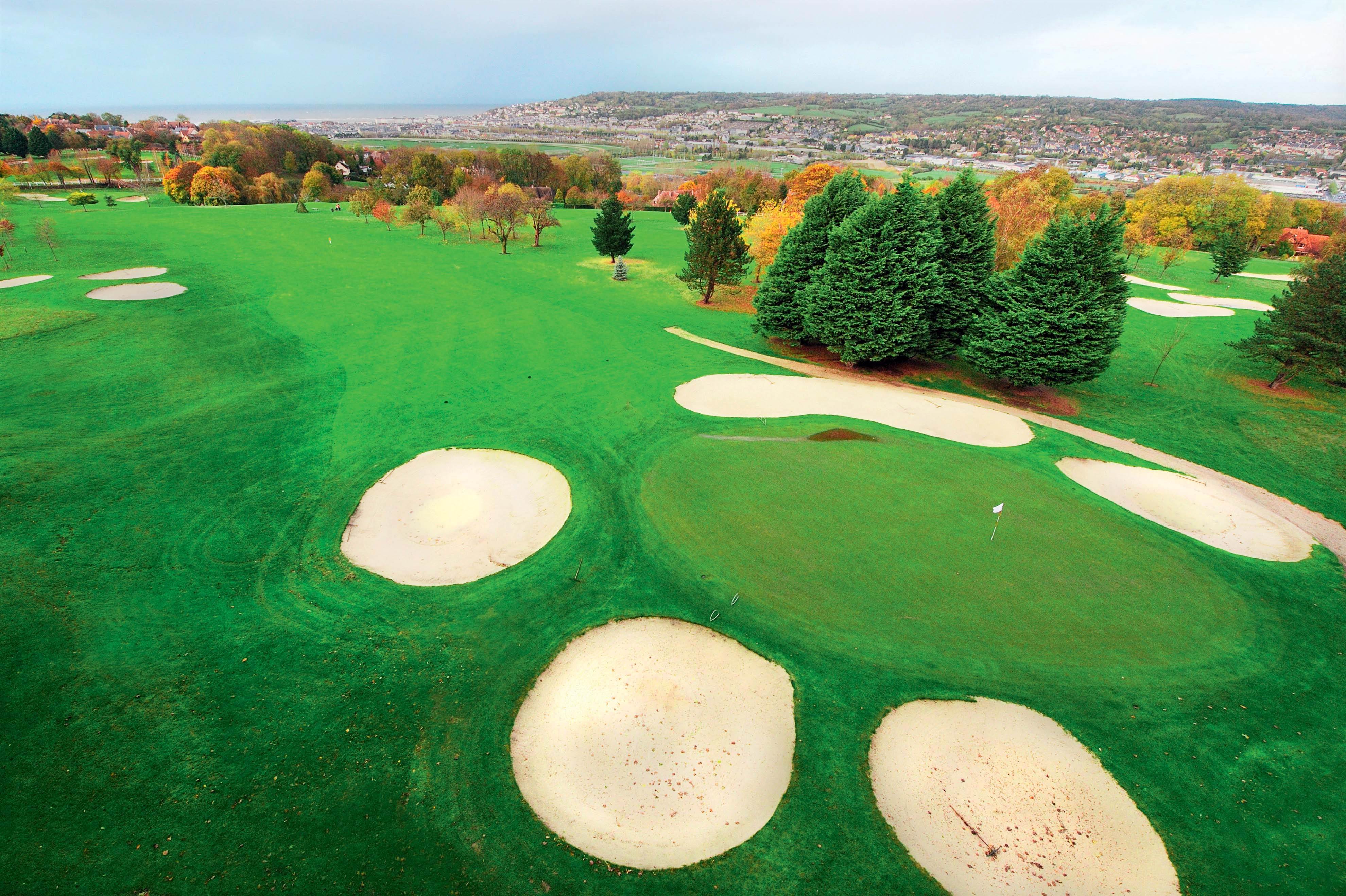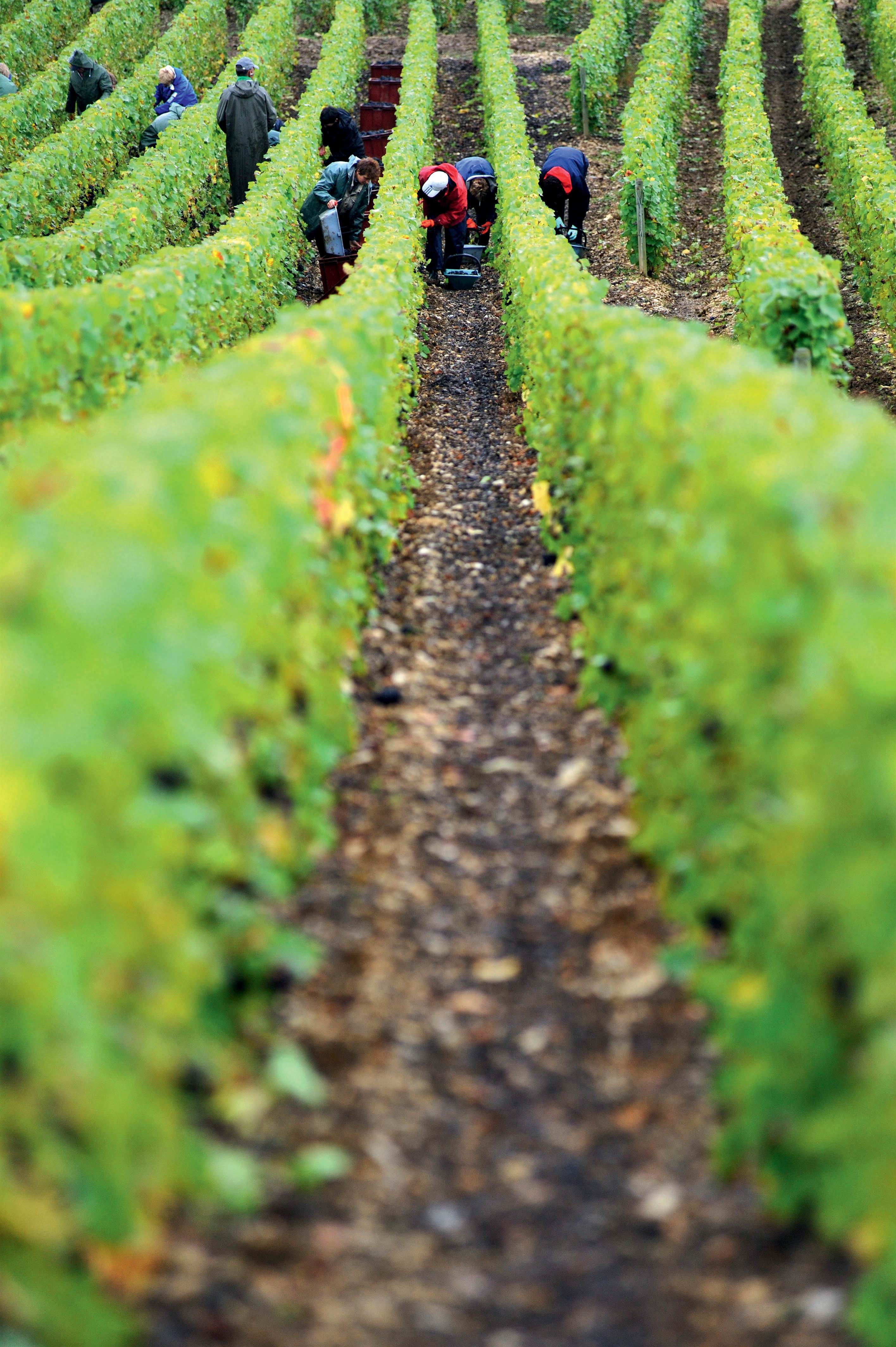No matter where you golf in France, there’s bound to be a stunning château and lashings of gourmet choices close by. Our correspondents tee off at some choice courses to be found in Champagne-Ardenne and Normandy.
NORMANDY’S GREENER PASTURES
The Pays d’Auge region of Normandy is a picturesque landscape of small towns, rolling meadows, russet-coloured apple orchards and half-timbered farmsteads. The good news for golfers is there’s ample opportunity to play some fine courses while sampling delicious local produce.

An excellent starting point is the luxurious Hôtel Barrière L’Hôtel du Golf near the coastal town of Deauville. Many famous guests, including Errol Flynn and Yves St Laurent, have enjoyed the hotel’s old-world charms since it opened its doors in 1929. Autographed photos of the rich and famous can be found inside the foyer, opposite the cool Le Green Bar with its extensive selection of Calvados.
Only a long putt from the hotel, and rated among France’s top-20 prettiest layouts, Barriére Golf Deauville has always been one of the places to play in Normandy. The three loops of nine holes are in excellent condition year round, with beautifully manicured fairways and greens.
RIGHT: One of the elaborately decorated bedrooms to be found at Château de Montaubois. PHOTO: Paul Marshall.
The original 18 holes (red and white tees), built by Tom Simpson in 1929 is parkland, with a nice mix of undulating fairways and varied holes with panoramic views over Deauville and Pays d’Auge country. The course requires accuracy and power with two par-4s of 400 metres and heavily bunkered par-3s on the front nine. The other nine-holes (blue tees) designed in 1964 by Henry Cotton bear a more wooded character.
Another challenging 27 holes wind through lush Normandy pastureland 15km south of Deauville at Pont L’Évêque, famous for the Normandy cheese of the same name. The higher part of the Barriére Golf de Saint-Julien course encourages some open-shouldered driving, and when the holes are not long they are technically difficult, especially 11, 12 and 14.

The signature holes of the main 18-hole layout are the 9th and 18th, both par-4s, where you must play your second shots over water to reach heavily-bunkered greens, with the marvellous château-style clubhouse as a backdrop. If you have time, stop by the restaurant for some fine French cuisine before taking on the nine-hole Le Bocage course.
“To complement the golf and champagne experience, stay at one of Champagne-Ardenne’s many historic châteaux.”
Completing the trio of 27-hole courses close to Deauville is Golf Amirauté, a championship course designed by Bill Baker. A magical site studded with lakes, it features huge fairways, large greens, plenty of water and a novel hazard: contemporary sculptures. The aptly named ‘Art Course’ is mostly flat so it can easily be walked, though carts are readily available as with most French courses. There’s also the floodlit nine-hole ‘Star Course’, two putting greens, a grass practice range and a 42-bay driving range.
In addition to the golf, there’s quality regional produce to sample – in particular the prized apple brandy Calvados. Enjoy a tour at Manoir d’Apreval, a family-owned estate in the coastal village of Pennedepie (10km east of Deauville) that makes a line of fine Calvados.
RIGHT: Grape pickers at work in the ‘Côte des Bar’ champagne region. PHOTO: Paul Marshall.
After learning how it’s made, visit the shop for a tasting and a chance to purchase other apple-based drinks such as robust ciders and the refreshing aperitif pommeau (a two-thirds cider and one-third Calvados mix), that makes a great 19th hole tipple. Inland from Deauville, the slate-roofed Château du Breuil has been completely restored by new owners who have been distilling highly respected spirits for three generations.
A Normandy cheese is the perfect partner for a Calvados or cider, with much of it being produced around the small towns of Livarot, Pont l’Évêque and Camembert. With its golden-yellow centre and creamy-white rind, the circular Camembert is the quintessential Normandy cheese.
Lesser-known cheeses include Pont l’Évêque, an uncooked, un-pressed cow’s milk cheese that is square in shape, and Livarot, a blue cheese that’s been made here for more than 700 years. Then there’s Pavé d’Auge, a semi-soft, creamy cheese with a reddish rind that is so called because it looks like the square cobblestones (pave) you still see in old marketplaces in France and the heart-shaped Neufchâtel, a soft, slightly crumbly, mould-ripened cheese.

For a closer insight into cheese making, visit Fromagerie Graindorge, a producer in Livarot that offers free tours. Observe the various stages of cheese making - working the curd, salting, drying, and washing the rind. Before leaving, it’s mandatory to sample some cheeses, beautifully displayed in colourful boxes inside the shop. Keep an eye out for Le Grain d’Orge with Calvados – a delicious cheese that combines two of region’s most celebrated products.
WHERE TO SIP

Champagne Drappier: A family producer of excellent champagnes in the ‘Côte des Bar’ region. www.champagne-drappier.com
C Comme Champagne: Specialist champagne bar and boutique in Épernay with more than 350 champagnes available: www.c-comme.fr
RIGHT: Boxes of cheeses from the Graindorge cheese fabriqué. PHOTO Paul Marshall.
Route du Champagne: The Champagne Trail. www.aube-champagne.com
Perching Bar: The world’s first champagne bar in the trees on the outskirts of Verzy. www.perchingbar.com
Related Articles

Review: Omaha Beach Golf Club

Drinks With... Ricky Ponting













